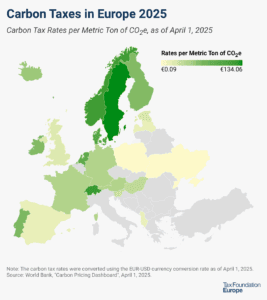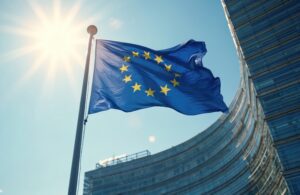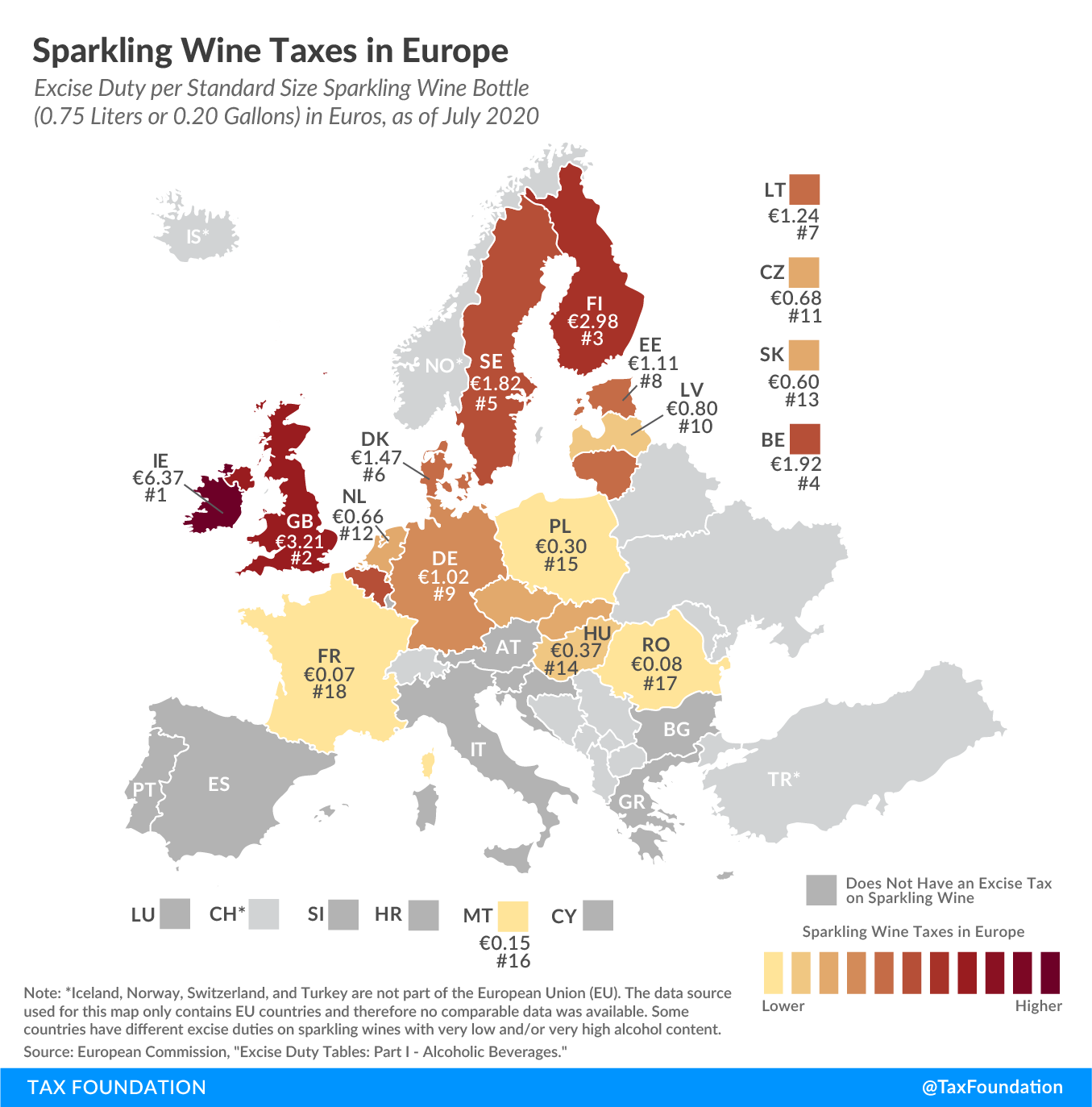
Sparkling Wine Taxes in Europe
1 min readBy:This week, people around the world will celebrate New Year’s Eve, with many opening a bottle of sparkling wine to wish farewell to—a rather consequential—2020 and offer a warm welcome to the—by many of us, long-awaited—new year 2021.
If you have ever wondered about the taxA tax is a mandatory payment or charge collected by local, state, and national governments from individuals or businesses to cover the costs of general government services, goods, and activities. consequences of opening that bottle of sparkling wine—yes, there is a tax angle to everything—today’s map will provide you with some insights. Excise duties on sparkling wine differ significantly across Europe, ranging from no excise tax in some countries to over €6 (US $7) per bottle in Ireland.
Among European Union countries, you’ll find the highest excise taxes on sparkling wine in Ireland, at €6.37 ($7.14) per standard sized wine bottle (750 ml or 20 oz). The United Kingdom and Finland are next, at €3.21 ($3.60) and €2.98 ($3.33), respectively.
Of the countries levying a sparkling wine tax, the lowest rates can be found in France (€0.07/$0.08), Romania (€0.08/$0.09), and Malta (€0.15/$0.17). Austria, Bulgaria, Croatia, Cyprus, Greece, Italy, Luxembourg, Portugal, Slovenia, and Spain all don’t levy excise duties on sparkling wine.
All European countries also levy a value-added tax (VAT) on sparkling wine. The amounts shown on the map relate only to excise taxes and do not include the VAT, which is charged on the sales value of the sparkling wine bottle.
Share this article





